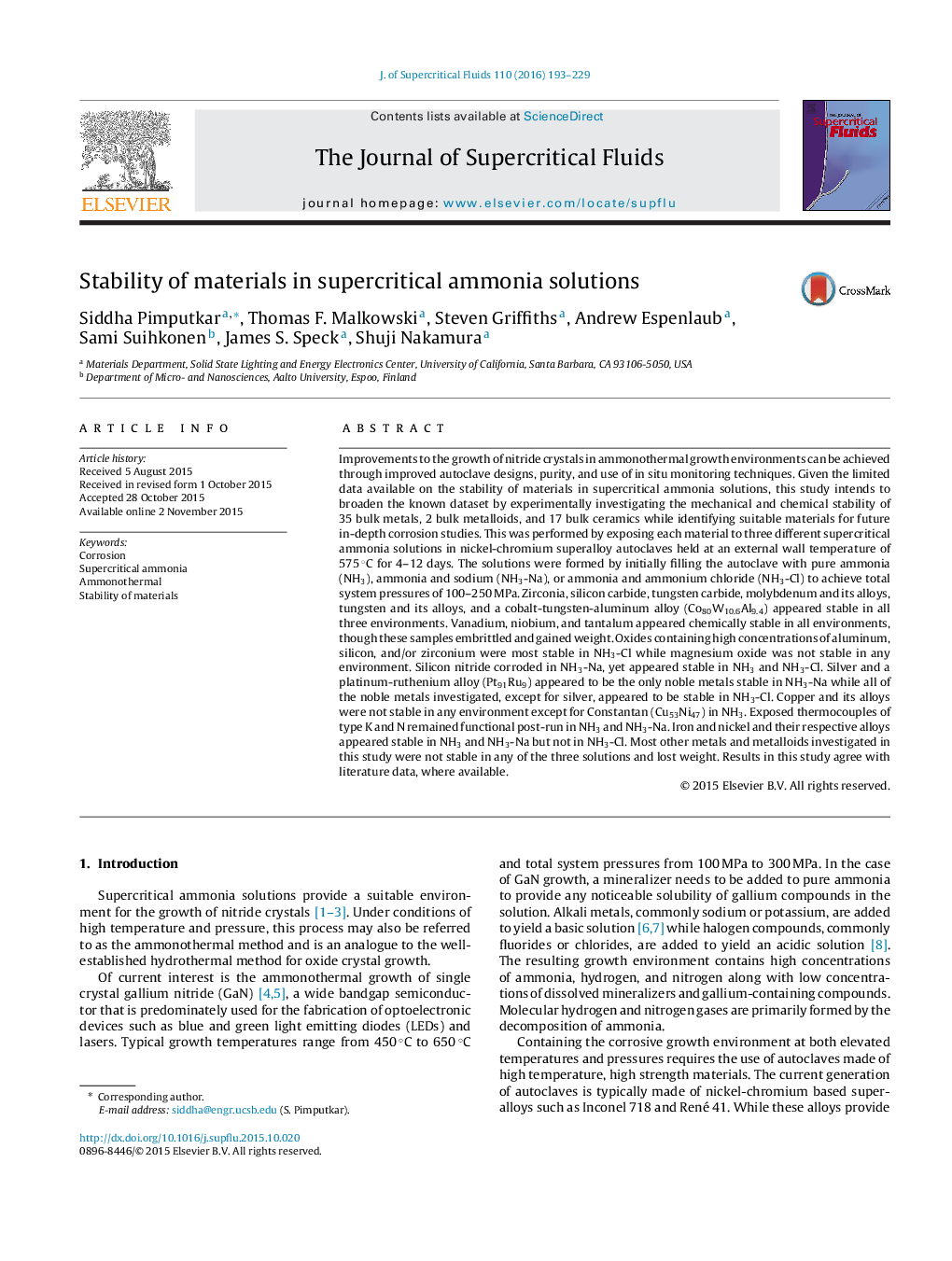| کد مقاله | کد نشریه | سال انتشار | مقاله انگلیسی | نسخه تمام متن |
|---|---|---|---|---|
| 230036 | 1427367 | 2016 | 37 صفحه PDF | دانلود رایگان |
• Stability of 35 metals, 2 metalloids and 17 ceramics in 3 sc. NH3 solutions analyzed.
• Co, Mo, and W-containing metals mostly stable in NH3, NH3-Na, NH3-Cl solutions.
• V, Nb, and Ta appeared largely stable, though they embrittled and gained weight.
• ZrO2, SiC, and WC appeared stable in all 3 solutions.
• All oxides and noble metals except ZrO2, Ag, and Pt91Ru9 appear unstable in NH3-Na.
Improvements to the growth of nitride crystals in ammonothermal growth environments can be achieved through improved autoclave designs, purity, and use of in situ monitoring techniques. Given the limited data available on the stability of materials in supercritical ammonia solutions, this study intends to broaden the known dataset by experimentally investigating the mechanical and chemical stability of 35 bulk metals, 2 bulk metalloids, and 17 bulk ceramics while identifying suitable materials for future in-depth corrosion studies. This was performed by exposing each material to three different supercritical ammonia solutions in nickel-chromium superalloy autoclaves held at an external wall temperature of 575 °C for 4–12 days. The solutions were formed by initially filling the autoclave with pure ammonia (NH3), ammonia and sodium (NH3-Na), or ammonia and ammonium chloride (NH3-Cl) to achieve total system pressures of 100–250 MPa. Zirconia, silicon carbide, tungsten carbide, molybdenum and its alloys, tungsten and its alloys, and a cobalt-tungsten-aluminum alloy (Co80W10.6Al9.4) appeared stable in all three environments. Vanadium, niobium, and tantalum appeared chemically stable in all environments, though these samples embrittled and gained weight. Oxides containing high concentrations of aluminum, silicon, and/or zirconium were most stable in NH3-Cl while magnesium oxide was not stable in any environment. Silicon nitride corroded in NH3-Na, yet appeared stable in NH3 and NH3-Cl. Silver and a platinum-ruthenium alloy (Pt91Ru9) appeared to be the only noble metals stable in NH3-Na while all of the noble metals investigated, except for silver, appeared to be stable in NH3-Cl. Copper and its alloys were not stable in any environment except for Constantan (Cu53Ni47) in NH3. Exposed thermocouples of type K and N remained functional post-run in NH3 and NH3-Na. Iron and nickel and their respective alloys appeared stable in NH3 and NH3-Na but not in NH3-Cl. Most other metals and metalloids investigated in this study were not stable in any of the three solutions and lost weight. Results in this study agree with literature data, where available.
Figure optionsDownload as PowerPoint slide
Journal: The Journal of Supercritical Fluids - Volume 110, April 2016, Pages 193–229
